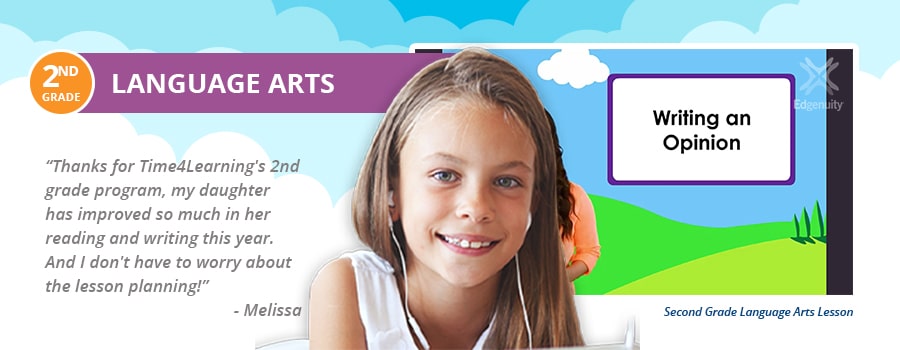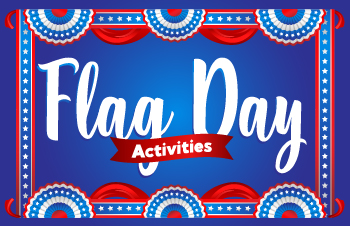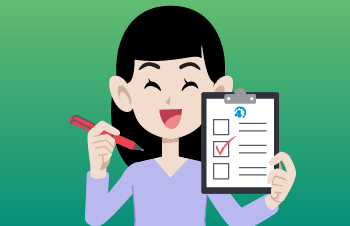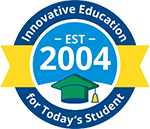Second Grade English Language Arts Homeschool Curriculum
Students in 2nd grade language arts will gain more skills in reading, writing, speaking, and listening. They will continue to build an understanding of the connection between sounds, letters, and words. They will gain skills in using word roots to help them figure out the meaning of new words. Second graders practice word use and comprehension by writing to express ideas and information.
What Language Arts Concepts Should a 2nd Grader Know?
By the time they finish first grade, students are getting a strong handle on phonemic awareness. They are writing short sentences, reading simple stories and poems, and can begin to explain what they are reading about. Some of the specific skills that second grade language arts students will need to know include:
- Being able to answer a question about a story they have just read or listened to (who, what, when, why, where)
- Reading simple stories, fables, and articles fluently and independently
- Figuring out unfamiliar words using phonetic strategies
- Identifying the main topic in a text
The ideal second grade language arts curriculum will cover each of these bases with a combination of lessons, activities, and assessments to make sure students are on the track to success. Read on to learn how Time4Learning’s second grade language arts scope and sequence covers all of these topics to help your student master these crucial concepts.
Second Grade Reading Goals/Objectives
Foundational skills for second grade readers involve making sure they are able to read carefully and independently for sustained periods of time. They will grow in their ability to comprehend unfamiliar text and to make predictions based on what they have just read. Some of the specific reading goals for 2nd grade include:
- Using the information in text to determine the characters, setting, or plot.
- Identifying the meaning of words and phrases in appropriately-leveled text based on contextual cues
- Anticipating, making inferences, and recognizing the author’s point of view of a story
Second Grade Writing Goals/Objectives
In second grade, students continue learning how to communicate clearly and coherently with their writing. They will begin to study the writing process—the stages of writing from pre-writing through editing.
Some of the specific goals that second graders will aim for in writing include:
- Learn to gather information from sources to answer a question.
- Writing for different purposes and audiences such as creative, informational/expository, and persuasive forms
- Creating written drafts that will be revised and edited, with guidance from a teacher
Second Grade Grammar Goals/Objectives
It is impossible to separate reading and writing skills from the conventions of English. Although often one of the more challenging areas of language arts, second grade students should be on track to creating grammatically correct sentences and paragraphs. Second graders will continue to review the grammar rules they have learned to this point, and will add new concepts such as:
- Distinguishing between complete and incomplete sentences
- Identifying and correctly using parts of speech including nouns and verbs
- Using quotation marks correctly
- Spelling frequently used, but irregular words correctly (e.g.: was, were, says, said)
Time4Learning’s Second Grade English Language Arts Lessons
The student will demonstrate knowledge in the following areas: long vowels ending with silent e; high frequency words; fluency with modeled reading; vocabulary; reading a leveled text; story elements identifying main characters; and writing.
The student will demonstrate knowledge in the following areas: the vowel digraphs ai and ay with the long a sound; high frequency words; fluency with reading rate; vocabulary; reading a leveled text; sequencing; and writing.
The student will demonstrate knowledge in the following areas: the vowel digraphs ea and ee with the long e sound, the vowel y with the long e sound; high frequency words; fluency focusing on periods; vocabulary; reading a leveled text; story elements identifying setting; and writing.
The student will demonstrate knowledge in the following areas: the long vowel i as spelled with the letters igh, y, and ie; the prefix pre-; high frequency words; fluency focusing on question marks; vocabulary; reading a leveled text; details; and writing.
The student will demonstrate knowledge in the following areas: the vowel digraphs oa and ow with the long o sound; high frequency words; fluency focusing on speed and accuracy; vocabulary words and nuances in meaning; reading a leveled text; main idea; and writing.
The student will demonstrate knowledge in the following areas: r-controlled vowels er, ir, and ur; the prefixes un-, re-, and the root word “tele”; high frequency words; fluency with quotation marks; vocabulary; reading a leveled text; supporting details; and writing.
The student will demonstrate knowledge in the following areas: the r-controlled vowels ar, or, and ore; high frequency words; fluency focusing on exclamation marks; vocabulary; reading a leveled text; story elements identifying conflict; and writing.
The student will demonstrate knowledge in the following areas: the consonant digraphs sh, ch, th, wh; high frequency words; fluency reviewing periods and exclamation marks; vocabulary; reading a leveled text; predicting outcomes; and writing.
The student will demonstrate knowledge in the following areas: vowel diphthongs ow, ou, oi, and oy; high frequency words; fluency reviewing question marks and quotation marks; vocabulary; reading a leveled text; context clues; and writing.
The student will demonstrate knowledge in the following areas: the consonant clusters str and spr; high frequency words; fluency focusing on inflection; vocabulary; reading a leveled text; sequencing events in a narrative; and writing.
The student will demonstrate knowledge in the following areas: the inflectional endings ing and ed; high frequency words; fluency focusing on phrasing; vocabulary; reading a leveled text; story elements identifying characters, setting, and plot; and writing.
The student will demonstrate knowledge in the following areas: plurals s and es; high frequency words; fluency with commas; vocabulary; reading a leveled text; summarizing; and writing.
The student will demonstrate knowledge in the following areas: the double consonants tt, pp, and ll; high frequency words; fluency focusing on reading with a sense of anticipation; vocabulary; reading a leveled text; Author’s Purpose; and writing.
The student will demonstrate knowledge in the following areas: the vowel exception le; the root word “graph”; high frequency words; fluency focusing on phrasing; vocabulary and context clues; reading a leveled text; making inferences; and writing.
The student will demonstrate knowledge in the following areas: silent consonants kn and wr; high frequency words; fluency with rhythm of poetry; vocabulary; reading a leveled text; author’s point of view; and writing.
The student will demonstrate knowledge in the following areas: antonyms; high frequency words; fluency reviewing expression with characterization; vocabulary; reading a leveled text; locating information on a graph; and writing.
The student will demonstrate knowledge in the following areas: synonyms; high frequency words; fluency focusing on rhythm with poetry; vocabulary; reading a leveled text; cause and effect in expository text; context clues; using a dictionary; and writing.
The student will demonstrate knowledge in the following areas: homonyms; high frequency words; fluency with inflection of tone; vocabulary; reading a leveled text; context clues; using glossaries; and writing.
The student will demonstrate knowledge in the following areas: the suffix er; high frequency words; fluency focusing on stress; vocabulary and nuances in meaning; reading a leveled text; making inferences and drawing conclusions; and writing.
The student will demonstrate knowledge in the following areas: the suffix est; high frequency words; fluency focusing on stress and tone; vocabulary; reading a leveled text; making inferences and drawing conclusions; context clues; shades of meaning; and writing.
The student will demonstrate knowledge in the following areas: the suffix ly; high frequency words; fluency with a review of fluent reading; vocabulary; reading a leveled text; cause and effect; and writing.
The student will demonstrate knowledge in the following areas: the prefix re; high frequency words; fluency focusing on review of commas, question marks, and periods; vocabulary; reading a leveled text; context clues; and writing.
The student will demonstrate knowledge in the following areas: the prefix un; high frequency words; fluency focusing on phrasing; vocabulary; reading authentic literature; supporting details; and writing.
The student will demonstrate knowledge in the following areas: the suffix less; high frequency words; fluency focusing on intonation and stress; vocabulary; reading a leveled text; reading and interpreting maps; and writing.
The student will demonstrate knowledge in the following areas: the suffix able; high frequency words; fluency focusing on characterization; vocabulary; reading a leveled text; summarizing; and writing.
The student will demonstrate knowledge in the following areas: multisyllabic words; high frequency words; fluency with a review of fluent reading; vocabulary; reading authentic literature; identifying cause and effect; and writing.
Language Arts Extensions Lesson Plan – 2nd Grade Curriculum
The student will learn thematic content through discovery and achieve comprehension by reading literature with emphasis on vocabulary. Stories use controlled vocabulary to enhance phonemic awareness.
Through a series of learning activities, focused on discovery, recognition, and application, the student will practice phonetic skills. Students will experience words in a variety of modes, including rhyme and story.
The student will demonstrate knowledge in the following areas: the vowel digraphs ea and ee with the long e sound, the vowel y with the long e sound; high frequency words; fluency focusing on periods; vocabulary; reading a leveled text; story elements identifying setting; and writing.
Chapter Test: Spiders – ILA
The student will learn thematic content through discovery and achieve comprehension by reading literature with emphasis on vocabulary. Stories use controlled vocabulary to enhance phonemic awareness.
Through a series of learning activities focused on discovery, recognition, and application, the student will practice phonetic skills. The student will experience words in a variety of modes, including rhyme and story. –Keywords: bees, phonics, consonant blends tw and tr, blending, segmenting, phonological awareness, decodable reader, pre-writing, authentic writing, story.–
The student will learn thematic content through discovery and achieve comprehension by reading literature with emphasis on vocabulary. Stories use controlled vocabulary to enhance phonemic awareness. Keywords: worms, story.
Through a series of learning activities, focused on discovery, recognition, and application, the student will practice phonetic skills. Students will experience words in a variety of modes, including rhyme and literature.
Chapter Test: Worms – ILA
The student will learn thematic content through discovery and achieve comprehension by reading literature with emphasis on vocabulary. Stories use controlled vocabulary to enhance phonemic awareness.
Through a series of learning activities focused on discovery, recognition, and application, the student will practice phonetic skills. The student will experience words in a variety of modes, including rhyme and story. Keywords: nutrition, phonics, consonant blend sp, digraph -ck, blending, segmenting, phonological awareness, decodable reader, pre-writing, authentic writing, story.
Chapter Test: Nutrition – ILA
The student will learn thematic content through discovery and achieve comprehension by reading literature with emphasis on vocabulary. Stories use controlled vocabulary to enhance phonemic awareness.
Through a series of learning activities focused on discovery, recognition, and application, the student will practice phonetic skills. The student will experience words in a variety of modes, including rhyme and story. –Keywords: hygiene, phonics, consonant blends nd & sl, word families, blending, segmenting, phonological awareness, decodable reader, pre-writing, authentic writing, story.–
Chapter Test: Hygiene – ILA
An integrated, thematic chapter on fitness engages students in a series of activities that are rooted in the reading process.
Through a series of learning activities focused on discovery, recognition, and application, the student will practice phonetic skills. The student will experience words in a variety of modes, including rhyme and story.
Chapter Test: Fitness – ILA
The student will learn thematic content through discovery and achieve comprehension by reading literature with emphasis on vocabulary. Stories use controlled vocabulary to enhance phonemic awareness.
Through a series of learning activities focused on discovery, recognition, and application, the student will practice phonetic skills. The student will experience words in a variety of modes, including rhyme and story.
Chapter Test: Rain Forests – ILA
The student will learn thematic content through discovery and achieve comprehension by reading literature with emphasis on vocabulary. Stories use controlled vocabulary to enhance phonemic awareness.
Through a series of learning activities focused on discovery, recognition, and application, the student will practice phonetic skills. The students will experience words in a variety of modes, including rhyme and story.
Chapter Test: Arctic – ILA
The student will learn thematic content through discovery and achieve comprehension by reading literature with emphasis on vocabulary. Stories use controlled vocabulary to enhance phonemic awareness.
Through a series of learning activities focused on discovery, recognition, and application, the student will practice phonetic skills. The student will experience words in a variety of modes, including rhyme and story.
Chapter Test: Deserts – ILA
The student will learn thematic content through discovery and achieve comprehension by reading literature with emphasis on vocabulary. Stories use controlled vocabulary to enhance phonemic awareness.
Through a series of learning activities focused on discovery, recognition, and application, the student will practice phonetic skills. The student will experience words in a variety of modes, including rhyme and story.
Chapter Test: Directions – ILA
The student will learn thematic content through discovery and achieve comprehension by reading literature with emphasis on vocabulary. Stories use controlled vocabulary to enhance phonemic awareness.
Through a series of learning activities focused on discovery, recognition, and application, the student will practice phonetic skills. The student will experience words in a variety of modes, including rhyme and story.
Chapter Test: Maps and Globes – ILA
The student will learn thematic content through discovery and achieve comprehension by reading literature with emphasis on vocabulary. Stories use controlled vocabulary to enhance phonemic awareness.
Through a series of learning activities focused on discovery, recognition, and application, the student will practice phonetic skills. The student will experience words in a variety of modes, including rhyme and story.
Chapter Test: Symbols and Keys – ILA
The student will learn thematic content through discovery and achieve comprehension by reading literature with emphasis on vocabulary. Stories use controlled vocabulary to enhance phonemic awareness.
Through a series of learning activities focused on discovery, recognition, and application, the student will practice phonetic skills. The student will experience words in a variety of modes, including rhyme and story.
Chapter Test: Sounds – ILA
The student will learn thematic content through discovery and achieve comprehension by reading literature with emphasis on vocabulary. Stories use controlled vocabulary to enhance phonemic awareness.
Through a series of learning activities focused on discovery, recognition, and application, the student will practice phonetic skills. The student will experience words in a variety of modes, including rhyme and story.
The student will learn thematic content through discovery and achieve comprehension by reading literature with emphasis on vocabulary. Stories use controlled vocabulary to enhance phonemic awareness.
Through a series of learning activities focused on discovery, recognition, and application, the student will practice phonetic skills. The student will experience words in a variety of modes, including rhyme and story.
Chapter Test: Light – ILA
The student will learn thematic content through discovery and achieve comprehension by reading literature with emphasis on vocabulary. Stories use controlled vocabulary to enhance phonemic awareness.
Through a series of learning activities focused on discovery, recognition, and application, the student will practice phonetic skills. The student will experience words in a variety of modes, including rhyme and story.
Chapter Test: Hurricanes – ILA
The student will learn thematic content through discovery and achieve comprehension by reading literature with emphasis on vocabulary. Stories use controlled vocabulary to enhance phonemic awareness.
Through a series of learning activities focused on discovery, recognition, and application, the student will practice phonetic skills. The student will experience words in a variety of modes, including rhyme and story.
Chapter Test: Tornadoes – ILA
The student will learn thematic content through discovery and achieve comprehension by reading literature with emphasis on vocabulary. Stories use controlled vocabulary to enhance phonemic awareness.
Through a series of learning activities focused on discovery, recognition, and application, the student will practice phonetic skills. The student will experience words in a variety of modes, including rhyme and story.
Chapter Test: Volcanoes – ILA
The student will learn thematic content through discovery and achieve comprehension by reading literature with emphasis on vocabulary. Stories use controlled vocabulary to enhance phonemic awareness.
Through a series of learning activities focused on discovery, recognition, and application, the student will practice phonetic skills. The student will experience words in a variety of modes, including rhyme and story.
Chapter Test: Conflict Resolution – ILA
The student will learn thematic content through discovery and achieve comprehension by reading literature with emphasis on vocabulary. Stories use controlled vocabulary to enhance phonemic awareness.
Through a series of learning activities focused on discovery, recognition, and application, the student will practice phonetic skills. The student will experience words in a variety of modes, including rhyme and story.
Chapter Test: Following the Law – ILA
The student will learn thematic content through discovery and achieve comprehension by reading literature with emphasis on vocabulary. Stories use controlled vocabulary to enhance phonemic awareness.
Through a series of learning activities focused on discovery, recognition, and application, the student will practice phonetic skills. The student will experience words in a variety of modes, including rhyme and story.
Chapter Test: Goods and Services – ILA
The student will learn thematic content through discovery and achieve comprehension by reading literature with emphasis on vocabulary. Stories use controlled vocabulary to enhance phonemic awareness.
Through a series of learning activities focused on discovery, recognition, and application, the student will practice phonetic skills. The student will experience words in a variety of modes, including rhyme and story.
Chapter Test: Consumers and Producers – ILA
Scope & Sequence Copyright. © 2025 Edgenuity, Inc. All rights reserved.
Why Choose Time4Learning 2nd Grade Language Arts Curriculum?
Time4Learning’s comprehensive curriculum for language arts helps provide second grade students with a strong foundation in reading, writing, and English language conventions. Lessons are taught by colorful animated characters that sing, explain, and interact with the students. The homeschool language arts curriculum follows a student-paced approach that grants them the freedom to review or accelerate as needed.
Tens of thousands of families have chosen TimeLearning’s language arts curriculum as either their core program or as a supplement to other programs they are using.






